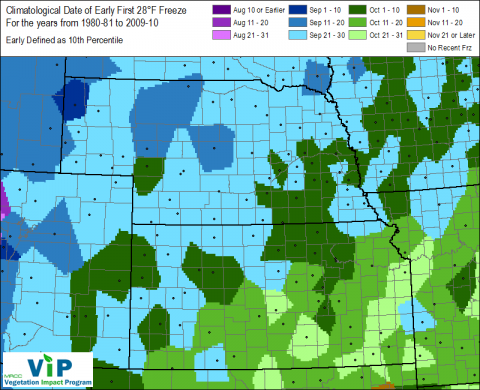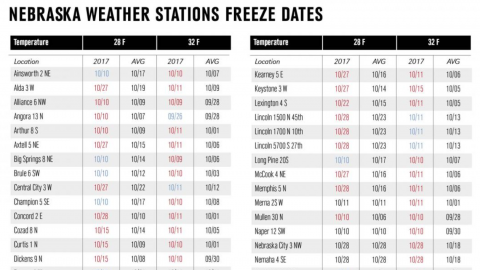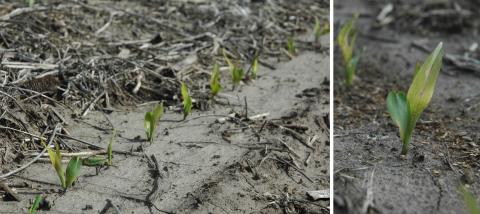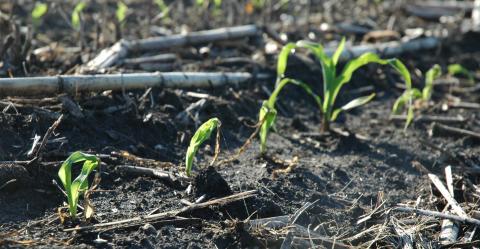Nebraska Weather: Variability is the Norm
October 19, 2018
With much of the state's corn and soybeans still not harvested, it seemed too early for snow, but really how unusual is an Oct. 14 snow? UNL Climatologist Ken Dewey takes a closer look at the variability of Nebraska's weather.
How Freezing Temperatures Affect Forages
October 15, 2018
When plants freeze, changes occur in their metabolism and composition that can poison grazing livestock if not properly managed. Delayed grazing is often the best solution, but how long should grazing be delayed?
Average First Freeze Dates for Nebraska
September 21, 2018
Statistics indicate that first freeze (28°F) trends for southeast Nebraska are changing, moving slightly later into the fall while those for northwest Nebraska, at the other end of the scale, are not changing. See average first freeze date ranges here.
Growing Season Officially Over for Nebraska
October 31, 2017
On Oct. 28, the last of Nebraska's Mesonet weather stations recorded a hard freeze of 28°F, effectively bringing the state's growing season to an end. A table shows dates for 28°F and 32°F freezes as well as average dates for these thresholds for 63 sites.
Forecast of End-of-Season Weather and Freeze Risk
September 5, 2017
What's the likelihood you'll see a hard freeze prior to corn maturity? Check out the end-of-season forecast and a table showing risk of a hard freeze for various emergence dates and locations in Nebraska.
Do I Need to Replant My Corn?
May 5, 2017
Considering whether your corn should be replanted? The authors look at types of plant damage at early growth stages and the effect on potential yield. It includes a table of relative yield potential of corn by planting date and population.
Be Patient When Assessing Winter Wheat Damage
May 5, 2017
Additional time is needed to properly access the injury and potential yield loss of Nebraska winter wheat, given the cold temperatures that followed last week's below freezing temperatures, heavy wet snow, and high winds. It takes at least a week to 10 days of warm temperatures to make a quality assessment.
Risk of Freeze Damage in Early-Planted, Emerged Corn
April 28, 2017
Early-season freeze damage results in a range of potential yield impacts. Severe damage is often limited to low-lying areas within a field because cool air is heavier than warm air. Early season survival of corn plants is attributed to growing-point protection below the soil surface; however, a hard frost can penetrate the ground and kill plants. Regrowth of corn following freeze damage is often impeded by dead leaf tissue that can entrap new leaves.






